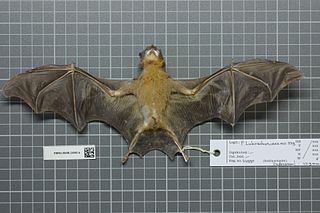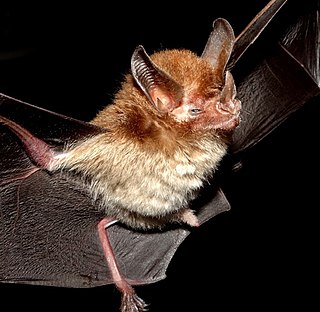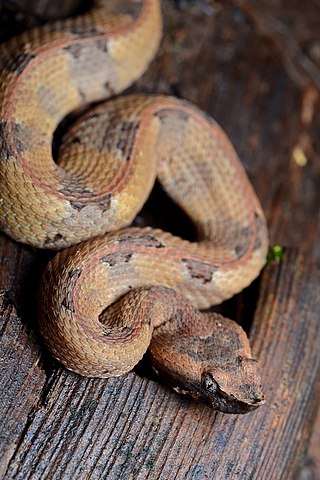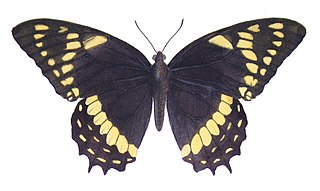
Central America is a subregion of North America. Its political boundaries are defined as bordering the United States and the Gulf of Mexico to the north, Colombia to the southeast, the Caribbean Sea and the Gulf of Mexico to the east, and the Pacific Ocean to the southwest. Central America is usually defined as consisting of eight countries: Belize, Costa Rica, El Salvador, Guatemala, Honduras, Nicaragua, Mexico, and Panama. Within Central America is the Mesoamerican biodiversity hotspot, which extends from southern Mexico to southeastern Panama. Due to the presence of several active geologic faults and the Central America Volcanic Arc, there is a high amount of seismic activity in the region, such as volcanic eruptions and earthquakes, which has resulted in death, injury, and property damage.

The white-tipped dove is a large New World tropical dove. Its scientific name commemorates the French naturalists Jules and Edouard Verreaux.

The yellow-throated big-eared bat or orange-throated bat(Lampronycteris brachyotis) is a species of bat that ranges from southern Mexico to Brazil. It is the only species within the genus Lampronycteris. A frugivore and insectivore, it is found in lowland forest up to an elevation of 700 m. Its activity is greatest in the first two hours after sunset, and peaks again after midnight.

Tomes's sword-nosed bat, also known as the common sword-nosed bat is a bat species from South and Central America. It is also found in the Bahamas, but is known from only one specimen collected on the island of New Providence.

The pygmy round-eared bat is a bat species from South and Central America.

Schmidts's big-eared bat is a bat species from South and Central America.

Niceforo's big-eared bat is a bat species from South and Central America, ranging from Chiapas to Bolivia and northeastern Brazil. Its habitat is primary and secondary forest at altitudes from sea level to 1000 m. It is crepuscular, being most active in the hour after sunset and before dawn. The species is monotypic within its genus.
The Mexican harvest mouse is a species of rodent in the family Cricetidae. It is found in Colombia, Costa Rica, Ecuador, El Salvador, Guatemala, Honduras, Mexico, Nicaragua, and Panama in a variety of habitats at altitudes from sea level to 3800 m.

The tody motmot is a species of near-passerine bird in the motmot family Momotidae. It is the only species placed in the genus Hylomanes. It is found in Belize, Colombia, Costa Rica, El Salvador, Guatemala, Honduras, Mexico, Nicaragua, and Panama.

The yellow-billed cacique is a species of cacique in the family Icteridae. It belongs to the monotypic genus Amblycercus. There is some question as to whether or not it is a true cacique.

Porthidium nasutum is a venomous pitviper species found in southern Mexico, Central America and northern South America. No subspecies are currently recognized.

Papilio menatius is a butterfly of the family Papilionidae.

Protesilaus is a genus of butterflies in the family Papilionidae. They are native to the Americas.

Marpesia is a butterfly genus in the family Nymphalidae. The species of this genus are found in the Neotropical and Nearctic realms.

Tithorea tarricina, the tarricina longwing, variable presonian, or cream-spotted tigerwing, is a species of butterfly belonging to the family Nymphalidae.

Protesilaus telesilaus is a species of butterfly of the genus Protesilaus. It is native to the Americas.

Eurytides agesilaus, the short-lined kite swallowtail, is a medium-sized species of butterfly in the family Papilionidae.

Protesilaus glaucolaus is a species of butterfly found in the Neotropical realm

Protesilaus molops is a species of butterfly found in the Neotropical realm.
Abraliopsis affinis is a species of enoploteuthid cephalopod in the tropical waters of the eastern Pacific Ocean, and is known from Chile, Colombia, Costa Rica, Ecuador, El Salvador, Guatemala, Honduras, Mexico, Nicaragua, Panama and Peru. It was described by Pfeffer in 1912 and is rated as a least-concern species by the IUCN.

















